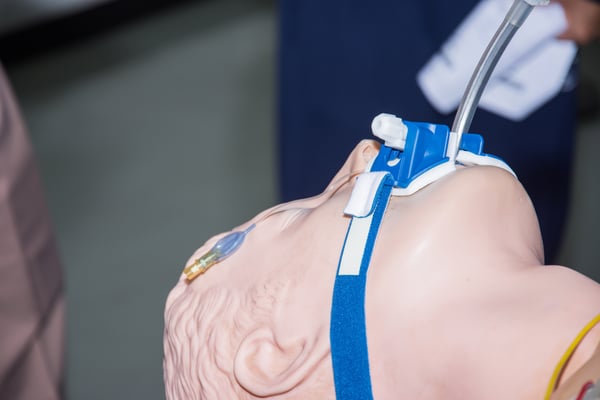
Endotracheal intubation offers life-saving relief when an airway obstruction endangers a patient’s life. Yet many first responders have little experience with endotracheal intubation, and some actively avoid training opportunities because they feel overwhelmed and intimidated by the process. Endotracheal intubation is a basic skill that every first responder must master.
While it does pose some risks, it is also safe with the proper technique and diligent attention to the patient. A keen understanding of airway anatomy can make the process of intubating a patient much easier.
Airway Anatomy: A Refresher
Understanding airway anatomy is vital to proper intubation. Endotracheal intubation can be done either nasally or orally, but oral intubation is easier in most contexts. That’s because it’s easier to visualize most of the airway. A quick overview is as follows:
- The upper airway begins in the nose, though many nasal structures extend into the face and are not visible. The nasopharynx is behind the nasal cavity and connects it to the oropharynx, which then connects to the laryngopharynx, which the epiglottis separates from the larynx at the base of the tongue.
- The larynx, which is made of a thick band of cartilage, ligaments, and muscles, divides the upper and lower airways. Its lower portion connects to the trachea, which extends to the carina and eventually to the bronchi in the lungs.
- First responders should note that the right main stem bronchus is less angled than the left main stem bronchus. So an endotracheal tube inserted too deeply into the lower airway is more likely to injure the right side.
The Importance of Airway Differences
Though all airways have the same basic anatomy, age, infirmity, and other differences can change the shape, texture, and musculature of various parts of the airway.
Smaller airways in children and neonates increase the risk of iatrogenic injuries during suction. Elders tend to have thinner, weaker airways, so injuries are more likely to be serious. In both very young and very old populations, airway obstructions are more likely to be a source of serious morbidity. Muscle tone in the airway tends to decline with age. This can change the shape of various airway structures. It also increases vulnerability to airway obstructions and other airway injuries.
These differences highlight the importance of never suctioning blindly. While there might be an average tracheal length or diameter, that tells you nothing about the patient. You must be able to see what you are doing—otherwise, you greatly increase the risk of a traumatic injury or ineffective suctioning.
Endotracheal Intubation Basics
All first responders must know when to intubate. Indications for endotracheal intubation include:
- Physical airway obstructions due to choking or a foreign object lodged in the airway.
- The need for mechanical ventilation.
- Hypoxic respiratory failure.
- Aspiration.
Patients may also require intubation during certain medical procedures.
When possible, patients should be sedated before intubation. Then, before intubating, examine the patient for signs of a difficult airway, such as a limited ability to open the mouth, anatomical abnormalities, stridor, and congenital malformations. Support staff should always be present before intubation, and equipment should be fully assembled and checked for breaks and other potential issues.
Choosing the right endotracheal tube is key. While smaller tubes are less likely to cause injuries, they offer less suctioning power and more airway resistance. Training on a variety of tube sizes and patients can prepare providers to make the right split-second decisions.
Before intubating, oxygenate the patient and ensure they are in a stable position. Then begin the procedure, slowly and steadily inserting the tube and pulling back if you feel resistance.
Life-Saving Techniques Demand Premium Equipment
Intubation is difficult at first, but with steady practice, it becomes second nature. So first responders should not bow out of training opportunities, even if their agency only rarely intubates patients. Regular training that includes high-pressure drills is critical to the success of every first responder and the survival of every patient.
Even the best training can’t compensate for low-quality or malfunctioning equipment. We can help you choose the right equipment for your agency.
Editor's Note: This blog was originally published November 2021 and has since been updated.















